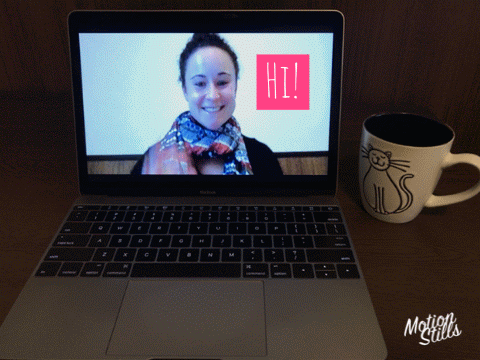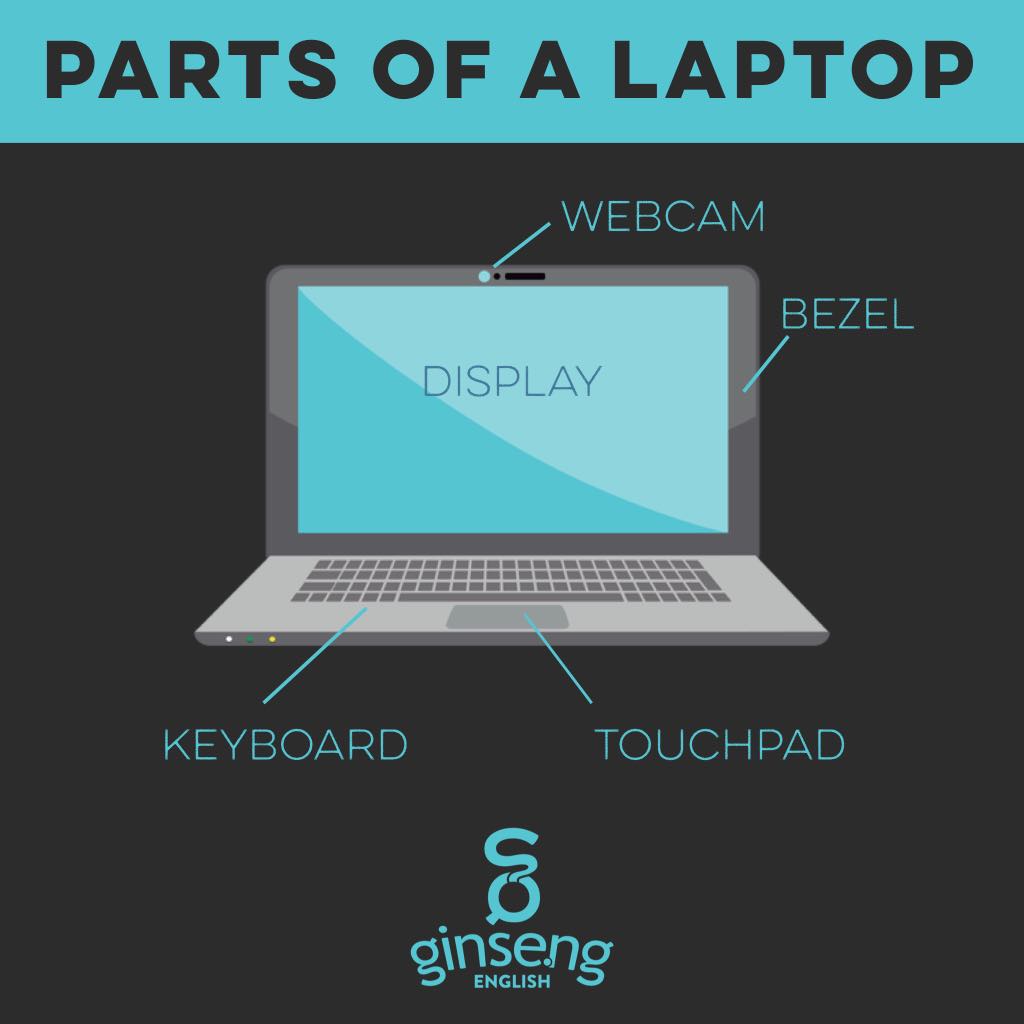This post teaches basic English vocabulary for describing our closest family members. Lots of examples and images!
Learn English for free online with the Ginseng English blog!
Viewing entries in
basic vocab
This post teaches basic English vocabulary for describing our closest family members. Lots of examples and images!
Podcasts are not only a great way to enjoy a car ride with friends, make a task like cleaning the kitchen more bearable, and help pass a long bus ride. They are also a great way to learn English!
Today’s post is about all the different nicknames that Americans have for their country.
Give, take, borrow, and lend are all extremely useful verbs in English, but the grammar can be confusing. This post teaches all four words with examples and illustrations!
Learning English online isn't easy, and your best options are generally actual online classes with real teachers, but Instagram does have some great ESL sites to help you improve your English! Here's a list of our favorite accounts.
When we study English, one of the first things we learn is that the response to thank you is you're welcome, right? A recent article in The Huffington Post says the :you're welcome" is slowly disappearing.
You may have seen this button on the Ginseng homepage and wondered, what is a "free demo"? What happens if I click this button!? Is it really FREE? Are there any strings attached? What happens next? Well, let me see if I can help to answer your questions!
We think our classes are pretty great, but you can't know that this is true unless you try one out, right?! That is where a free demo class comes in.
Demo is short for demonstration, which means we are showing you something. You might go for a demo, or a test drive, at a car dealership if you're thinking about buying a car, or you could get a free demo of a new computer software that your company is considering buying.
A "demo class" at Ginseng is a short, 30 minute sample of an online class class. You get to meet one of our teachers, see some of our fancy materials, and check out the follow-up emails we'll send you.
When you click on this button, you will need to fill out a short form and then I will get an alert from you. But wait, who am I?! Great question.

My name is Sarah, and I work for Ginseng. It is my job to help you with pretty much anything that you need from our online English school! You can ask me anything you want about our school, and I will do my best to help you out!
When I receive your free demo request, I will e-mail you to set up a time to video chat 📹 to learn more about what you are looking for. We can talk on Skype, Google Hangouts, WeChat, WhatsApp, Facetime—you name it!
I'll ask you questions about yourself, like:
(It's ok if you don't know, or even if you just want to study EVERYTHING!)
It is up to you to choose what you want your free class to be about. It can be focused on just about anything English, such as pronunciation, grammar, writing and conversation! We will also talk about what times are good for your free class.
After we speak, I will talk to our team here at Ginseng and find you the best online English teacher for your educational goals, and your availability.
Yes! Your 30 minute demo class is completely free. If you like what you see, we would love for you to share Ginseng English with your friends, and maybe even sign up for a class or two!
Great! So, take a moment to click the "request demo" button and fill out the form. Soon, you'll be hearing from me! Who knows, we might even become friends!
👇🏽👇🏽👇🏽👇🏽👇🏽👇🏽👇🏽👇🏽👇🏽👇🏽👇🏽👇🏽
Studying with Ginseng is easy! Click the FREE DEMO CLASS button to request your demo. Then you will get an email from one of our staff to schedule your class. Then just log in and meet your teacher! | ||
| Request Demo Class | Meet Ginseng Teacher | Schedule First Class! |
| 1 | 2 | 3 |

If have any questions about Ginseng, e-mail me at sarah@ginse.ng
My name is Sarah and I have 8 years of experience working with international students studying in the United States, most recently at Berklee College of Music in Boston. I share your passion for adventure, and am currently traveling through Asia as part of the Ginseng English Anywhere tour!
This article introduces basic vocabulary for describing people in the English language, including adjectives, words for features, and words for clothing items.. This article is appropriate for beginner and low-intermediate ESL students.
If you want to quickly expand your English vocabulary, adjectives are a great place to start! Adjectives are a really important part of speech. An adjective is a word used to describe a noun.
It is a good idea to focus on the most common ones in the language. Below are lists of the 50 most common words in both American and British English.
| No. | Adjective |
|---|---|
| 1 | OTHER |
| 2 | NEW |
| 3 | GOOD |
| 4 | AMERICAN |
| 5 | GREAT |
| 6 | BIG |
| 7 | HIGH |
| 8 | OLD |
| 9 | DIFFERENT |
| 10 | NATIONAL |
| 11 | SMALL |
| 12 | LITTLE |
| 13 | BLACK |
| 14 | IMPORTANT |
| 15 | POLITICAL |
| 16 | SOCIAL |
| 17 | LONG |
| 18 | YOUNG |
| 19 | RIGHT |
| 20 | BEST |
| 21 | REAL |
| 22 | WHITE |
| 23 | PUBLIC |
| 24 | SURE |
| 25 | ONLY |
| 26 | LARGE |
| 27 | ABLE |
| 28 | HUMAN |
| 29 | LOCAL |
| 30 | EARLY |
| 31 | BAD |
| 32 | BETTER |
| 33 | ECONOMIC |
| 34 | FREE |
| 35 | POSSIBLE |
| 36 | WHOLE |
| 37 | MAJOR |
| 38 | MILITARY |
| 39 | FEDERAL |
| 40 | INTERNATIONAL |
| 41 | TRUE |
| 42 | FULL |
| 43 | HARD |
| 44 | SPECIAL |
| 45 | RECENT |
| 46 | RED |
| 47 | OPEN |
| 48 | PERSONAL |
| 49 | GENERAL |
| 50 | CLEAR |
| No. | Adjective |
|---|---|
| 1 | OTHER |
| 2 | NEW |
| 3 | GOOD |
| 4 | OLD |
| 5 | DIFFERENT |
| 6 | LOCAL |
| 7 | GREAT |
| 8 | SMALL |
| 9 | SOCIAL |
| 10 | IMPORTANT |
| 11 | NATIONAL |
| 12 | HIGH |
| 13 | BRITISH |
| 14 | POSSIBLE |
| 15 | LARGE |
| 16 | RIGHT |
| 17 | LONG |
| 18 | LITTLE |
| 19 | YOUNG |
| 20 | POLITICAL |
| 21 | ABLE |
| 22 | GENERAL |
| 23 | ONLY |
| 24 | PUBLIC |
| 25 | AVAILABLE |
| 26 | FULL |
| 27 | EARLY |
| 28 | BEST |
| 29 | BIG |
| 30 | MAIN |
| 31 | MAJOR |
| 32 | ECONOMIC |
| 33 | SURE |
| 34 | REAL |
| 35 | LIKELY |
| 36 | BLACK |
| 37 | PARTICULAR |
| 38 | INTERNATIONAL |
| 39 | SPECIAL |
| 40 | DIFFICULT |
| 41 | CERTAIN |
| 42 | CLEAR |
| 43 | WHOLE |
| 44 | FURTHER |
| 45 | WHITE |
| 46 | OPEN |
| 47 | EUROPEAN |
| 48 | FREE |
| 49 | CENTRAL |
| 50 | SIMILAR |
Most of the most common adjectives are the same in the US and the UK (78% of the top 50 and 92% of the top 25 words appear in both lists). Notice that American is the 4th most common adjective in American English and British is the 13th most common adjective in British English. We shouldn't read too much into these simple lists, but it is interesting to note that military, federal, and personal all appear in the American list. Do you notice any other patterns?
That's all for now! Start studying!
If you're looking for something similar, check out the most common verbs in English.
Sources: The primary sources for compiling this article were the Corpus of Contemporary American English (COCA) and the British National Corpus.
Today lets learn English words to talk about parts of a laptop. As you may know, a laptop is a computer you can close like a book and take with you. Larger computers that you cannot take with you are called desktops, because they sit on top of a desk. A laptop sits on top of your lap (your lap is the upper part of your legs, which is horizontal when you sit!
The part of the laptop that you look at is called the display. Display is also a verb: your computer displays pictures, videos, and websites. Some people call this a screen, too. Screen is a more general word—your TV has a screen, there is a screen at the movies—but display is better for computers. On most laptops, there is an area around the display that doesn't show pictures, like a frame. We call this the bezel. In the middle of the bezel, above the display, you probably have a webcam: a camera that you can use on the web.
The part of the laptop with the letters is called the keyboard. A board is a flat surface, and this board is covered with buttons called keys; that's why we say keyboard! In front of the keyboard is a touchpad, which you can touch to move your cursor (the arrow on your computer screen).
On the sides of the laptop (not shown in this picture) you may have many different ports to plug in your power cord, headphones, or a USB cord.

Parts of a Laptop Computer
As you probably know, bike is a common short word for bicycle in English. Let's build our bicycle vocabulary by learning English names for parts of a bike!
The place where you sit is the seat, just like at the movies or in a car. You put your hands on the handlebars. Notice that this word is a combination of two other useful words: handle (something you hold in your hand) and bar (a long straight piece of metal). You put your feet on the two pedals.
The word bicycle actually means two (bi-) wheels (cycle). The rubber part of the wheel that touches the ground is called the tire. The thin metal pieces that connect to the middle of the wheel are called spokes.
The pedals connect to the rear wheel with a chain and many different circular gears. All of this is held together on a metal frame, the red part in this picture.

Take a look at the different parts of a bike in English!
Next up in our Ginseng English series Parts of a... is shoes! Do you know the names for the parts of your shoes? Read on and you soon will!
Three parts of a shoe actually have the same names as parts of your body. The toe is the part of the shoe where your toes are. The heel is the part of the shoe where your heel (the back of your foot) goes. The third one is a little less expected. The part on top that comes from the inside is called the tongue! Your foot doesn't have a tongue of course, but this part of the shoe looks a little like a tongue! 👅
On top of the tongue, the strings that you tie together are called the laces. Finally, the part on the bottom that touches the ground is called the sole of the shoe.

Across the world, everyone has some kind of home, though they all look very different! This post will describe the parts of a typical American house.
Welcome to the first post in a new series on basic vocabulary from the Ginseng English Blog: Parts of a... Today, let's look at some useful vocabulary for the outside of a car!
On a car there are four tires, two front tires and two rear tires. Front and rear are useful words when we talk about cars. A car has two bumpers to protect you in an accident: a front bumper and a rear bumper. Above the bumpers are lights. There are headlights at the front of the car, and taillights at the rear of the car. On each side of the car is a side-view mirror, to help you see behind you. Inside the car is a rear-view mirror, too.
What other car vocabulary do you know? What do you want to know? Comment below!

I recently came across this great infographic over at the W5 blog, called Spooktacular Halloween Costumes (notice that spooktacular is just a fun portmanteau of spooky and spectacular—more on portmanteaus in this blog post).
This seems like a great opportunity to talk about how we talk about costumes in English, which can be a little tricky. If you're talking to an American friend about an upcoming Halloween party, she might ask you:
What are you going as?
What am I going as? Going as?
It may sound like a strange question, but your friend is asking you what your costume will be, or what you will be pretending to be for halloween. Another way to say this is:
What are you dressing up as?
You could answer with:
Notice that if you are going as something generic (not a single, specific character), we use an indefinite article—a ghost, a cat, an elephant—but for specific characters, we don't need an article.
One more thing: if you're a character from a movie or TV show, it's common to add from [the movie]:
So, what are YOU going as for Halloween!?